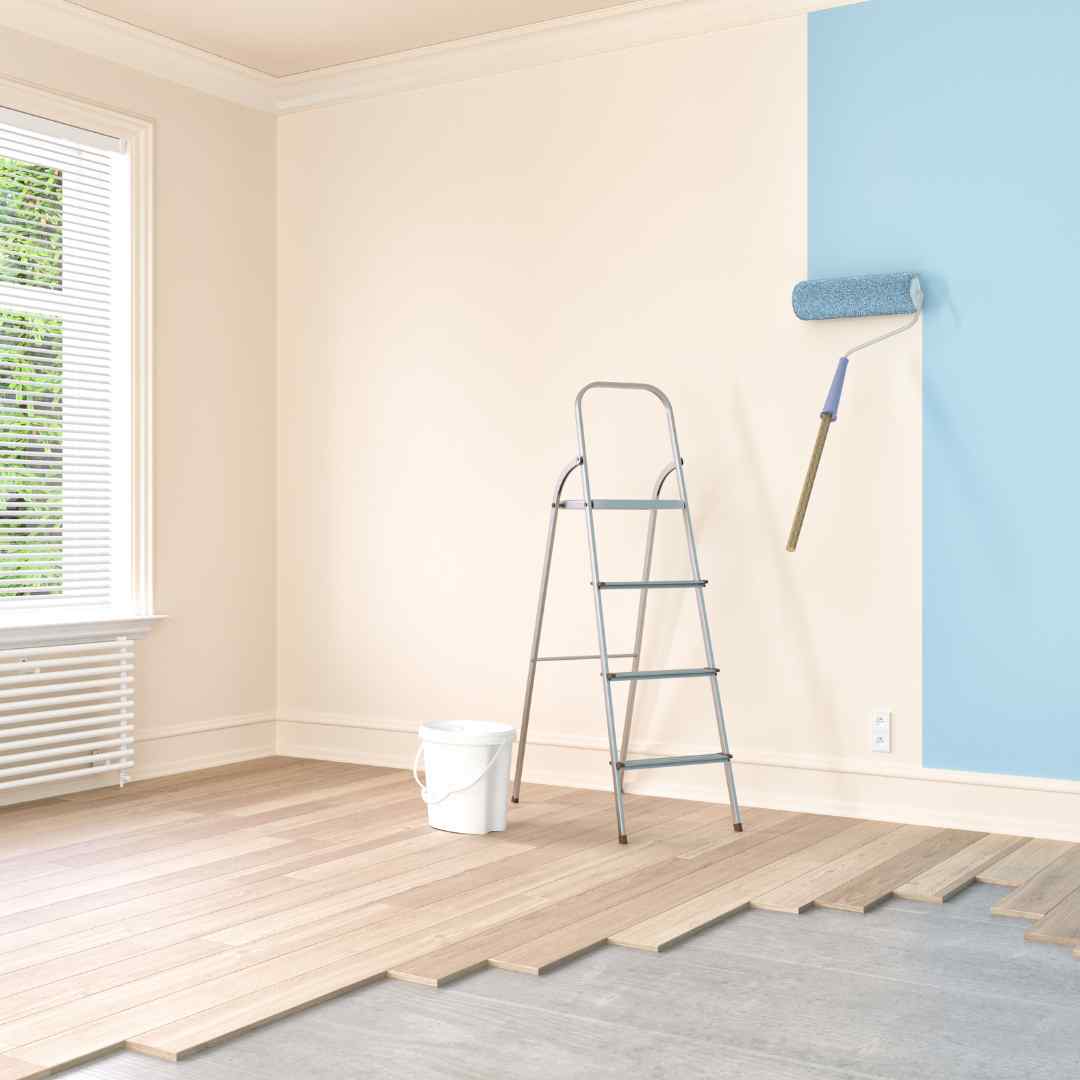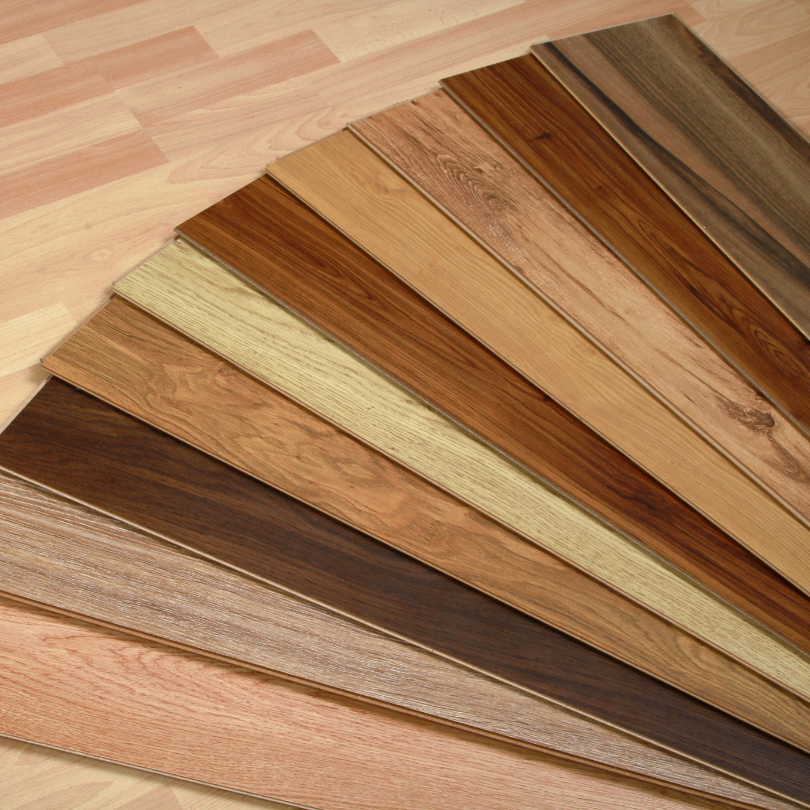Once you have built your home, it is time to paint both the interior and exterior of the structure. A new coat of paint can seal out moisture and can give your home some curb appeal with an interesting paint scheme. A bright paint color on the exterior of the home can reflect excess heat away, thus making for a more predictable insulation experience.
Here is everything you need to know about painting your home.
What is the proper way to paint a house?
Plan the painting design
Your options are virtually unlimited when choosing a new color scheme for your paint. Whether you match the color to other elements of your home or you choose something that reflects your personality, the eventual coat of paint will be based on the surface of your home.
This is because different materials require different types of paint, and can end up looking different despite choosing the same color. You will need paint swatches and paint samples to test them out on a small patch on your walls before settling for a particular color scheme.
Fix large issues on the walls
A fresh coat of paint is unlikely to look its best when there are underlying issues such as unfinished masonry, rotting wood, and warped trim pieces. Do some pre-paint repair work by snapping loose siding into place, replacing wood pieces, and carrying out any repairs that stick out when looking at the house.
For this work, you will likely require paintable wood putty, wood putty knives in different sizes, sandpaper, an orbital sander, and other construction tools that can help you smooth out the surfaces you intend to paint.
You can also fix imperfections in a masonry wall to ensure that the surface loks even. Ensure you seal joints using caulk on unplastered walls, and fixing the renders on plastered walls.
Alternatively, you can ask a construction expert to fix the issues you have identified. This will ensure your house looks neat before applying paint, albeit at a small price.
Clean the walls thoroughly
It is generally a good idea to power wash your walls before painting. This will ensure that any dirt and debris that may have built up during construction does not affect how the paint adheres to the walls.
Cleaning dirt, mold, mildew and any other substances will ensure that the multiple coats of paint are evenly distributed on the different surfaces.
Protect the surrounding areas
Even when done professionally, there is always a chance of paint spilling over during application. To make the finished product neater, cover areas that you do not intend to paint. This includes decks, landscaping, patios, walkways, windows, doors, and other elements whose appearance and color you want to maintain.
You may also want to tape up trim pieces and vents to ensure that paint is not applied to surfaces that already have their own color and finish built into them.
Apply the primer
A primer is an undercoat of preparatory coating applied to surfaces to ensure that paint can adhere better to materials. This provides a more solid face for the paint to lock onto compared to a bare wall surface.
Apply the first coat of paint
Paint is typically applied from the highest point of the house in straight, even strokes that follow the grain of the siding. At this stage, less is more because a thick pour may result in drips and uneven application.
You will need paintbrushes, a sprayer, and paint rollers to get this done.
For a plastered wall, you need to let the plaster dry completely, which may take up to 4 weeks after it is applied.
Experts advise creating your own mist coat paint, by watering down some emulsion paint which acts as a primer. Mist coat paint is quite runny, so make sure you roll over the drips before they dry and set in place.
For bare unplastered walls, you should first clean the wall using a wire brush to remove loose stones, before applying a coat of thinned masonry paint that is about 10 to 15% using a masonry roller.
You can then apply the second coat of non-thinned paint.
Apply the second coat
After the first coat of paint has been applied and allowed to dry completely, a second coat of paint with the desired color can be applied.
Ensure that you use fresh brushes and rollers which were not used to apply the first coat. If you have to reuse the same set of tools, ensure they are thoroughly cleaned and dried before touching the second coat of paint.
Apply the coat of paint in the same way as the first coat to ensure uniformity and a neat appearance.
Clean up
After the second coat of paint has dried up, you can take off the tape and coverings which you used to shield the deck, the patio, the landscaping, and any other items you may have covered. Ensure that any remaining paint cans are correctly sealed and that the lids are gently hammered into place around the perimeter.
Store any leftover paint in a cool dry place, or contact your painter to help you dispose of any paint or primer that you feel you need to dispose of.
How many coats of paint should you apply to a house?

The general rule of thumb is to use at least two coats of paint for the interior and exterior of homes. This is deemed particularly for the exterior because it will be exposed to multiple elements like strong sunlight, cold temperatures, rain, birds, and insects among other factors.
Using multiple coats of paint also ensures that your walls will look nice, the paint will last longer on them and you can get a longer warranty.
It will cost you more money and time to apply two or more coats of paint on your walls, but the end result will be worth the investment.
Should you hire a professional painter?

Hiring a painter is generally the safest bet to save you loads of time, money, and stress when it comes to painting a house. This is because painting is not as simple as purchasing paint, and brushes and getting down to work.
While you can paint your house on your own, it is a process that is best left to the experts. If you decide to hire a professional painter, you can expect to pay around $2 to $7 per square foot. This cost will include some minor prep work.
Remember that the pricing may vary based on the size of the structure, the cost of materials and the labor costs in your area. Experts recommend sourcing at least three quotes from professional painters to ensure that you are getting a competitive price in return for optimal services.
When enquiring from painters, ask them how many coats of paint they plan to apply and the quality of paint they intend to use. Cheaper estimates are a likely indication of using low-quality paint, so ensure you are paying a fair price for a worthwhile end product.
How do you maintain the exterior paint of a house?

Keeping your house looking freshly painted and as clean as possible requires some maintenance work. Experts advise power-washing the exterior of the home at least once a year.
You can also benefit from regular pruning and landscaping of any trees and shrubbery that can scrape the exterior during strong bouts of wind.
It is also wise to touch up any damaged areas as soon as you notice them and to clear clogged gutters and downspouts. This is because the continuous overflow of water can gradually damage your home’s exterior paint.
Conclusion
Painting a house is a process that involves planning, cleaning the walls, protecting areas that are meant to retain their color, applying several coats of paint, and cleaning up after the paint is applied.
Try to get a professional to do the paintwork for you to ensure a quality result, and ensure you clean up the area shortly after painting to prevent spots of paint from drying up in undesirable locations.







Leave a comment
This site is protected by hCaptcha and the hCaptcha Privacy Policy and Terms of Service apply.